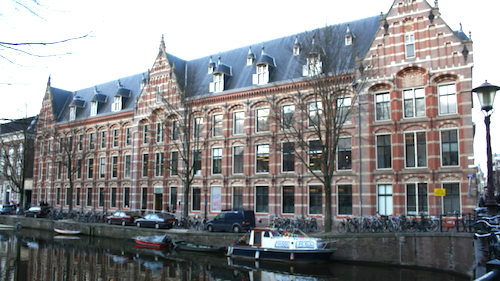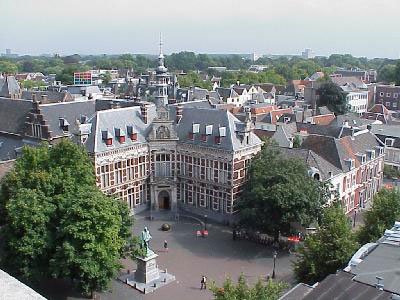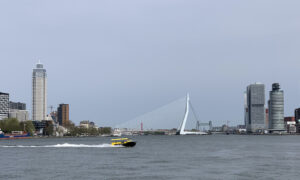We at Dispatches write disproportionally about the Netherlands, mostly because we’re based here.
But there’s another reason. Every time we turn around, there’s new research out about how Holland leads the world in quality health care. Or how Holland is the low-cost business center of Europe. Or we hear about a new high-tech company to write about.
In the last few days, London-based Times Higher Education released its 2015-2016 lists of best universities in Europe.
No, the Netherlands hasn’t placed a school in the global Top 20. The highest-ranked schools in the world according to Times Higher Education are all in United States, the United Kingdom, Canada or Switzerland.
But for a country the size of a couple of California counties, the Netherlands has placed more than its fair share of schools in the Top 100, with institutions comparable to the University of Southern Califonia and Washington University in St. Louis.
That’s important to expats. More English-speaking people are sending their children to university here because tuition is far less than even middling schools in the U.S. My daughter Lucy is going to Tilburg University here. It’s a great feeling knowing she’ll receive a superior education, yet not be saddled with college tuition debt for decades. And she’ll be prepared for graduate school in the United States.
So, let’s just jump right into this. We’ve posted before about the Times Higher Education rankings.
In the Times Higher Education’s World University Rankings 2015-2016, the 13 universities in the Netherlands all appear in the top 250, and all but one are in the top 200.
Just for fun, we’re going to include both the school’s ranking in the Netherlands and its global ranking.
No. 1 in the Netherlands Wageningen University and Research Center
(Global ranking No. 47)
 Wageningen is between Utrecht on the west and Arnhem in the east, and is about 70 miles southeast of Amsterdam. This is one of the top life-sciences universities in the world.
Wageningen is between Utrecht on the west and Arnhem in the east, and is about 70 miles southeast of Amsterdam. This is one of the top life-sciences universities in the world.
Wageningen University and Research Center is one of the world’s top life sciences and social sciences, with a focus on agriculture and environmental sciences. (For having a tiny piece of real estate, the Netherlands is a big country. In addition to cheese, Holland is one of the world’s largest producers of blueberries. Who knew!)
Most of the undergraduate science curricula are taught partly in Dutch and partly in English, but about 40 undergraduate and postgraduate programs are taught solely in English. International students make up about 20 percent of the student body.
The relevant stats:
-
9,248 students
-
Student:Staff Ratio 17
-
International Students: 21 percent
-
Female:Male Ratio 56:44
No. 2 University of Amsterdam
(Global No. 58)
 This is the largest university in the Netherlands with more than 30,000 students. It’s also one of the oldest in Holland. U of A offers about 150 degrees taught in English, attracting more than 3,000 international students from more than 100 countries, according to the Times Higher Education post. We think it’s cool that Amsterdam is in pretty good company on the list, just six places below Brown University, an Ivy League stalwart, and four below Ecole Normal Superior, the school of the French elite. It is ranked among the top 30 universities in Europe and the top 100 worldwide … and you’re going to school in freakin’ Amsterdam!
This is the largest university in the Netherlands with more than 30,000 students. It’s also one of the oldest in Holland. U of A offers about 150 degrees taught in English, attracting more than 3,000 international students from more than 100 countries, according to the Times Higher Education post. We think it’s cool that Amsterdam is in pretty good company on the list, just six places below Brown University, an Ivy League stalwart, and four below Ecole Normal Superior, the school of the French elite. It is ranked among the top 30 universities in Europe and the top 100 worldwide … and you’re going to school in freakin’ Amsterdam!
Relevant stats:
-
~25,000 students
-
Student:Staff Ratio 14.4
-
International Students: 11%
-
Female:Male Ratio 53:47More than 50 English-taught Master’s programs are available in the:
- Economics and Business
- Humanities
- Law (which of course doesn’t qualify you to take the bar in the United States.)
- Medicine
- Science
- Social and Behavioural Sciences
No. 3 Utrecht University
(Global No. 62)
 Utrecht is a big city (fourth-largest in Holland) about 20 miles south of Amsterdam, and the university here has a big reputation. But it’s probably the least international school on this list … only 7 percent of its 7,000 students. Utrecht is famous here for shaping the Netherlands’ 19th century ‘Golden Age’ of scientific research and discovery, according to Times Higher Education, with 12 Nobel Laureates among alums or faculty members.
Utrecht is a big city (fourth-largest in Holland) about 20 miles south of Amsterdam, and the university here has a big reputation. But it’s probably the least international school on this list … only 7 percent of its 7,000 students. Utrecht is famous here for shaping the Netherlands’ 19th century ‘Golden Age’ of scientific research and discovery, according to Times Higher Education, with 12 Nobel Laureates among alums or faculty members.
Relevant stats:
-
~31,000 students
-
Student:Staff Ratio 15.4
-
International Students: 7%
-
Female:Male Ratio 59:41
No. 4 Delft University of Technology
(Global No. 65)
 Delft University of Technology (TU Delft) near The Hague is the largest and oldest public technical university in the Netherlands, founded as a royal academy for civilian engineers, partly to educate civil servants who would work for the Dutch East India Company, according to Times Higher Education. TU Delft ranks in the Top 20 in the world for engineering and technology, and in the top 50 for life sciences. It’s one of two tech schools along with Eindhoven University of Technology, or TU/e, which didn’t make the list.
Delft University of Technology (TU Delft) near The Hague is the largest and oldest public technical university in the Netherlands, founded as a royal academy for civilian engineers, partly to educate civil servants who would work for the Dutch East India Company, according to Times Higher Education. TU Delft ranks in the Top 20 in the world for engineering and technology, and in the top 50 for life sciences. It’s one of two tech schools along with Eindhoven University of Technology, or TU/e, which didn’t make the list.
Delft was also just named to Reuter’s inaugural list of the 100 most innovative universities in Europe at No. 7, one position above Oxford University.
Delft is famous for the sloping green “lawn roof” on its library (at right).
Relevant stats:
-
~16,000 students
-
Student:Staff Ratio 19.4
-
International Students: 25%
-
Female:Male Ratio 26:74
No. 5 Leiden University
(Global No. 67)
 Leiden University just south of Amsterdam is the oldest university in the Netherlands, established in 1575 by William of Orange. Philosophers such as Spinoza and Descartes were at Leiden during the Dutch Golden Age of art and commerce. Sixteen Nobel Prize winners have been affiliated with the university, including Albert Einstein and Enrico Fermi. This is where the Dutch Royal family often sends its children, according to Times Higher Education. Which is good enough for us. More than 200 degrees are taught in English at the university, both at the undergraduate and postgraduate level, and about 100 nations are represented in the student body. The school educational approach is focused on small class sizes and individual learning.
Leiden University just south of Amsterdam is the oldest university in the Netherlands, established in 1575 by William of Orange. Philosophers such as Spinoza and Descartes were at Leiden during the Dutch Golden Age of art and commerce. Sixteen Nobel Prize winners have been affiliated with the university, including Albert Einstein and Enrico Fermi. This is where the Dutch Royal family often sends its children, according to Times Higher Education. Which is good enough for us. More than 200 degrees are taught in English at the university, both at the undergraduate and postgraduate level, and about 100 nations are represented in the student body. The school educational approach is focused on small class sizes and individual learning.
-
~21,000 students
-
Student:Staff Ratio 17.1
-
International students: 10%
-
Female:Male Ratio 59:41
How they work their magic:
This caveat: According to a post last fall, Times Higher Education World changed their methodology last year, and they advise not to compare this year’s list to previous rankings. Their preface to the list makes clear the universities provide the data, which Times Higher Education World crunches. Included on their website are details about how data points such as staff-to-student ratios and the number of PhDs on staff are weighted in the five categories.
Co-CEO of Dispatches Europe. A former military reporter, I'm a serial expat who has lived in France, Turkey, Germany and the Netherlands.














